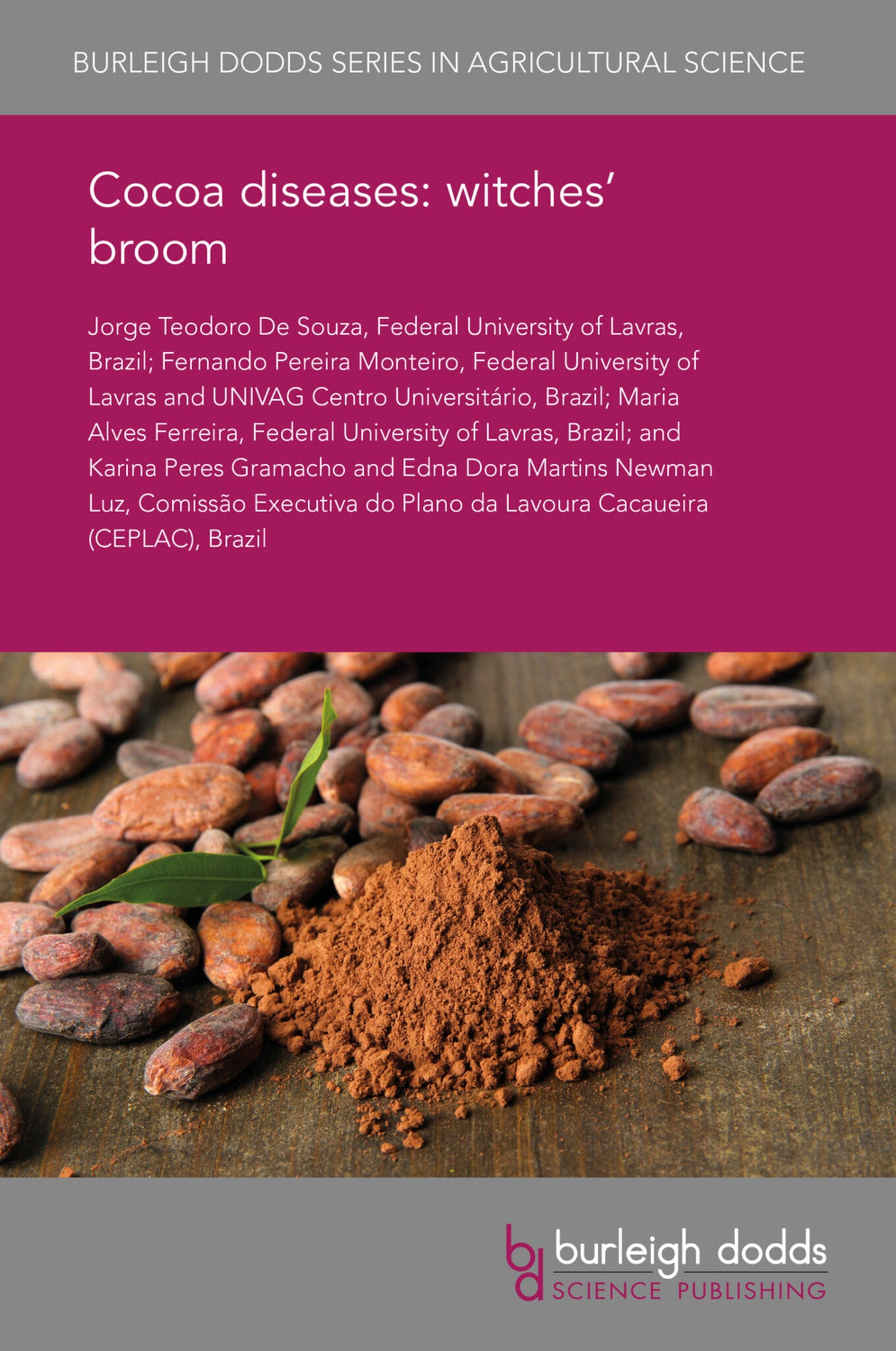We're sorry. An error has occurred
Please cancel or retry.
Cocoa diseases: witches' broom

Some error occured while loading the Quick View. Please close the Quick View and try reloading the page.
Couldn't load pickup availability
- Format:
-
08 August 2018


TECHNOLOGY & ENGINEERING / Agriculture / Sustainable Agriculture, Pest control / plant diseases, TECHNOLOGY & ENGINEERING / Agriculture / Tropical Agriculture, TECHNOLOGY & ENGINEERING / Agriculture / Agronomy / Crop Science, TECHNOLOGY & ENGINEERING / Pest Control, Sustainable agriculture, Agronomy and crop production, Tropical agriculture

1 Introduction 2 Geographical distribution and historical perspective 3 Pathogen taxonomy, biology and disease cycle 4 Diversity, host range and symptomatology 5 Omics of M. perniciosa 6 Fungal pathogenicity and disease physiology 7 Plant development and disease epidemiology 8 Disease control: phytosanitation, and chemical and biological control 9 Disease control: genetic resistance and integrated management 10 Concluding remarks and outlook 11 Where to look for further information 12 Acknowledgements 13 References



